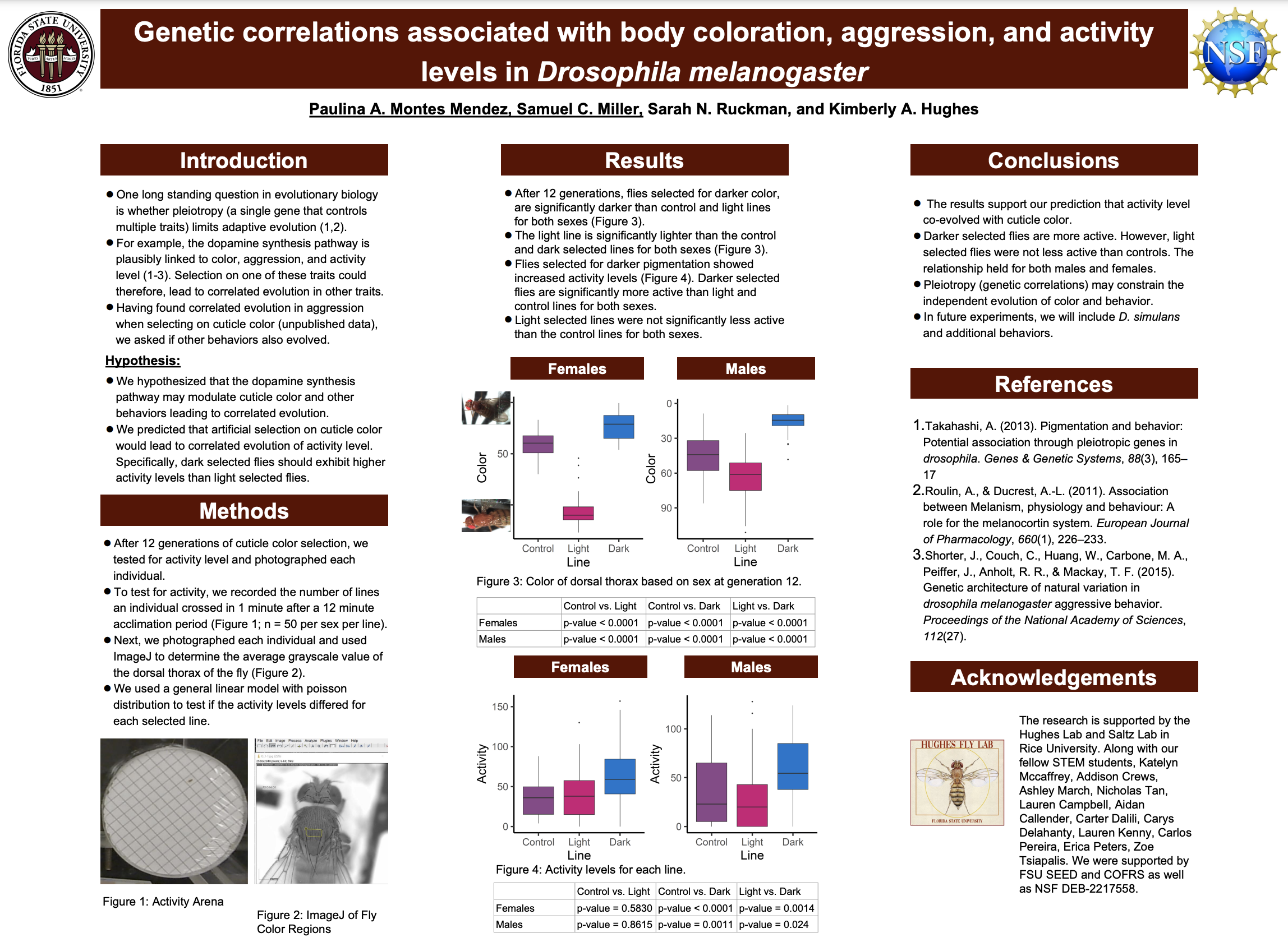Research Symposium
24th annual Undergraduate Research Symposium, April 3, 2024
Samuel Miller Poster Session 2: 10:45 am - 11:45 am/296

BIO
Hello! I am from Sarasota Florida and have doing research in the Hughes lab for roughly a year now. I graduate this semester, and am looking forward to what is in store!
Genetic correlations associated with body coloration, aggression, and activity levels in Drosophila melanogaster
Authors: Samuel Miller, Sarah RuckmanStudent Major: Biology
Mentor: Sarah Ruckman
Mentor's Department: Biological Science Mentor's College: College of Arts and Sciences Co-Presenters: Paulina Montes-Mendez
Abstract
One long standing question in evolutionary biology is whether single genes that control multiple traits (pleiotropy) results in limitations on adaptive evolution. If it does, then our ability to predict adaptation (e.g., in the face of changing environments) is compromised. We are using a much-discussed correlation between body coloration and aggressive behavior as a system to address this question. Having found the predicted genetic correlation between cuticle color and aggressive behavior in Drosophila melanogaster using artificial selection (unpublished data), we then asked if any other behaviors co-evolved under selection on cuticle color. For example, the dopamine synthesis pathway is plausibly related to color, aggression, and other behaviors, such as activity level. We therefore measured activity level of flies (D. melanogaster) selected for darker and lighter cuticle color. Results suggest that activity level is higher in the dark-selected lines, suggesting that genetic correlations do constrain the independent evolution of cuticle color and behavior. The next step in this study to identify candidate genes underlying the correlation and test for pleiotropic effects using transgenic approaches.
Keywords: Genetic correlations in Drosophila Melanogaster


